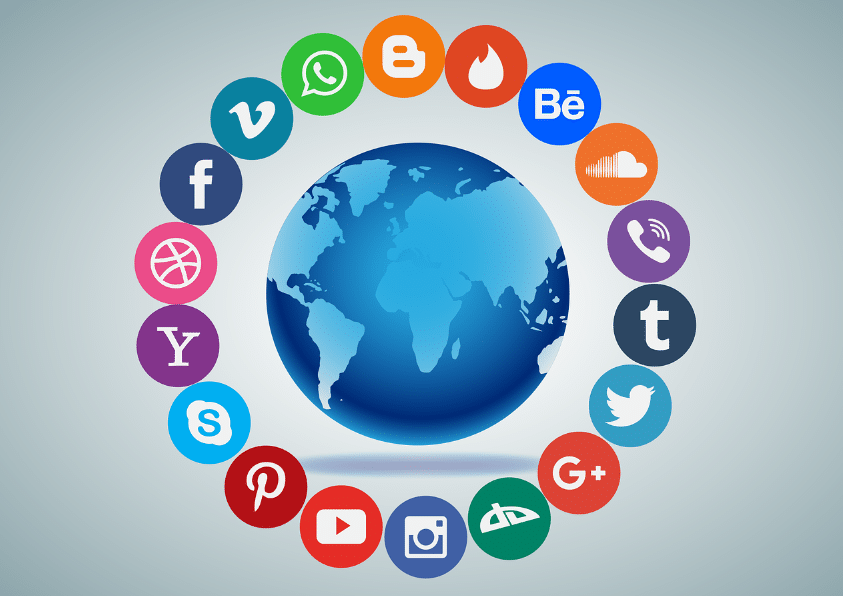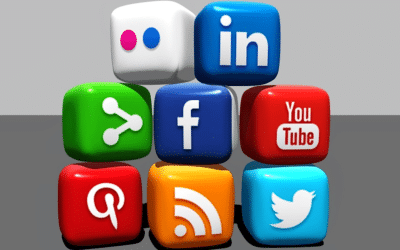Based on the dynamics of our cognitive abilities, humans are meant to be very visual beings. The brain itself accommodates over hundreds of millions of neurons devoted to processing visual information. These neurons form over 30 percent of the entire cortex region, which ranks significantly over the 8 percent of the cortex devoted to touch and just 3 percent to hearing and listening.
Both our optic nerves, which carry signals from within the retina in our eyes to the brain, consist of over a million fibers. This is a remarkable increase over the mere 30,000 fibers present in the auditory nerve, which carries signals from what we hear.
Thus, it wouldn’t be wrong to say that the human brain is wired to process images and graphics in a more comprehensive manner than it does any other piece of information around it. Social media marketing has for ages focused on graphics, and the information mentioned in this introduction makes it even important for marketers in the field to create stellar graphics that not only attract attention, but also excite users.
Marketers that have been in social media marketing know just how tough it can be to create engaging images on their social media pages. The process is extremely time consuming and can take a lot out of the newbie designer.
In this article we mention a number of design tips for social media graphics. These tips will help you create decent pictures and infographics that attract user attention and carry the core message of your branding strategy.
Color
90 percent of all judgments and decisions related to a brand’s social media page or the product they’re marketing is based on the color and feel of the informational or promotional posts. Color is an important factor in determining the first impression and is perhaps the most complex aspect of any social media design.
Color helps set the mood for the viewer and creates an environment where emotions are easily conveyed, and experiences are evoked. Researchers recently unearthed interesting facts related to the use of color in marketing. A recent study found that 90 percent of all snap judgments on a product are made through its color.
Use colors that resonate with your brand story and help guide your audience. Brands can be tempted to use a wide array of colors, but it is preferred that you use colors in line with the personality you want for your brand, rather than what is available under the sun.
We give you a quick rundown of different colors and the ways they are perceived in the human brain:
- Red: Energetic and urgent
- Orange: Aggressive
- Yellow: Youthful and optimistic
- Green: Wealthy and relaxing
- Blue: Secure and trustworthy
- Pink: Feminine and romantic
- Purple: Calm and soothing
- Black: Powerful and sleek
These are the different ways different colors are perceived by the human brain. Use colors that sit well with your strategy and help you further your cause.
Achieve a Balance with Your Graphics
Graphics in the online world need to be well balanced to engage users and catch their attention. A great way to look at balance in graphics is to think of every element in your design and ensure that it carries a certain amount of weight behind it.
To make the process even simpler, if you were to put your image or graphic on a weighing or balancing scale, would it be slightly bent toward one side?
It is also equally important to remember that balance isn’t necessarily dictated by one factor in the graphic. Instead, it is an amalgam of different factors that come together to determine the balance of the image. There are 4 varying factors that determine the balance of a particular image:
- symmetrical
- asymmetrical
- radial (picture a spiral staircase)
- crystallographic (picture a tray of donuts with different toppings)
All of these balancing characteristics can be used together to achieve the aims and objectives you’re looking for from your graphics. To balance the weight of your image and get the best results possible, you should look to play around with factors such as the items in the graphic, the brightness of the image, the quantity of objects, the isolation of objects, warm and cool colors, and orientation of objects within the graphic.
Typography
Typography in graphics is an art that you need to master for social media engagement. Choosing the perfect font for the content on your social media graphics can help bring your posts to life and can even motivate people to engage with you – how cool is that?
The font style and size used in the graphic also have a massive impact in the way your design is ultimately received by people and the kind of intentional or unintentional impact it has on their sensory abilities. Readability should be preferred over aesthetics when you’re selecting the right font size and style to use for your social media graphics. Obviously, you want something that is beautiful and aesthetic to look at, but the very first point of concern for you should be to achieve a font style and size that is readable for your audience.
It is also okay to take inspiration from a font style or format that you’ve seen used by another industry player or some other brand from a different industry. The mantra for successful graphics in the online world is to try to be good rather than to try to be original.
Whether you use a serif font or the good ol’ Times New Roman, your primary objective should be to make the font readable for your audience.
Some pro tips that brands can follow to use the best fonts for their social media graphics include:
- Your design should be limited to a maximum of 3 type faces. Do not clutter the image with content and varying fonts
- Use a font style that sits well with the social media platform you are posting on. Different social media platforms have different requirements, try to respect that
- Kerningis a good technique to use for titles
- Traditionally, if you were to go by the principles followed by renowned names, sans-serif is perfect for the web and serif is best for printing
Add Contrast to Images
When was the last time you saw an image on your social media that really popped? Images that really pop and stand out of the ordinary usually have high contrast in the image. Contrast is usually achieved through differentiation between the elements of a graphic. What this means is that one element of the graphic pops more than the other elements within that graphic.
Effective contrast is an amazing way to enhance the engagement levels of your images on social media and ensure that people keep responding and following up with you. Oftentimes your social media design and graphics can become too monotonous with the same clutter and can be at risk of falling flat on their face. However, contrast adds the necessary appeal to your graphics and ensures that you get the desired results.
Some of the perfect ways to add contrasts in your images without overdoing the work are:
Add Contrast through Colors
Adding contrast through colors is one of the easiest ways to help your graphics stand out, without overdoing the use of colors. For instance, you can play with light colors and add a small bit of dark colors to make the dark vibes stand out. The end result will not only look cool but will most definitely pop out when others take a look.
Add Contrast with Shapes
Another amazing way to add contrast to your social media images is through the use of different shapes. Symmetrical shapes can be put together with the asymmetrical nature of some organic shapes to achieve the contrast you require.
Contrast in Size
If you don’t prefer the two techniques above, you can simply add contrast to your social media images by highlighting or bolding certain text within the graphic. By increasing the size of certain words or elements, you are making them look more prominent in comparison to other elements in the image. This helps direct users to what you want them to see and can also become a branding element for you.
Different Images for Different Social Media Platforms
We are seriously amazed by the number of small and medium enterprises online that use the same images for all social media platforms. Each social media platform has its own size resolutions and requisites for effective social media graphics. The size that works efficiently on Facebook may not work the same way on Twitter. So, if you need your images to get the perfect response across different social media handles, it is necessary that you use different pictures for different social media platforms. The extra work you put in here will help you generate positive feedback from customers and will also bring in additional interest and engagement.
Include a Logo
The presence of a logo on all your social media graphics is a need of the hour. A recognizable logo makes it much easier for your customers to identify the source of the graphic, even when it is shared forward and reposted by other individuals. This helps create brand recognition and engagement, as customers associate your logo with your brand.
Suppose if you were to see an engaging post with the letter ‘M’ written down in the style that we all know, you would immediately be able to recognize the message to be posted by McDonald’s. This is the brand recognition McDonald’s has achieved through years of persistence and continuity with the same logo.
Thus, whenever you post a graphic online on your social media handles, make sure you add a logo in the background, which helps skyrocket your brand recognition in customers.
Set Goals for Images
The entire purpose behind social media content and marketing is to achieve certain goals and objectives related to the organization as a whole. While some brands are using social media to drive traffic forward, others are using it to increase engagement, bring more leads to their website, generate a bigger fan following and build brand recognition.
As part of your social media objectives and goals, you should identify a different goal for each image you post on your social media. Each image should carry meaning or a goal, which should identify the purpose behind it, and also help you track the progress you have achieved through that media. Also, make sure you don’t set too many goals for single images, as that might make the entire process a lot more confusing.
Avoid Too Much Text
We know social media marketers love text. How else can you communicate other than text? But your love for text shouldn’t lead to the use of overcrowded clutter on your images. Make your images and elements speak out for themselves without adding too much clutter in the form of text. Too much text is overwhelming and can destroy aesthetics.
Be Consistent
Consistency is the key to everything on social media. Regardless of whether you’re posting graphics or driving your engagement levels forward through simple posts, you should be consistent in the branding techniques you follow, and the color schemes you use. Also make sure that the text within your graphic and the caption following it are similar in nature and not poles apart.
We hope you enjoyed learning these effective design tips for social media graphics. These small tweaks to your images and your social media graphics strategy can help produce quality results for you and your brand.








0 Comments